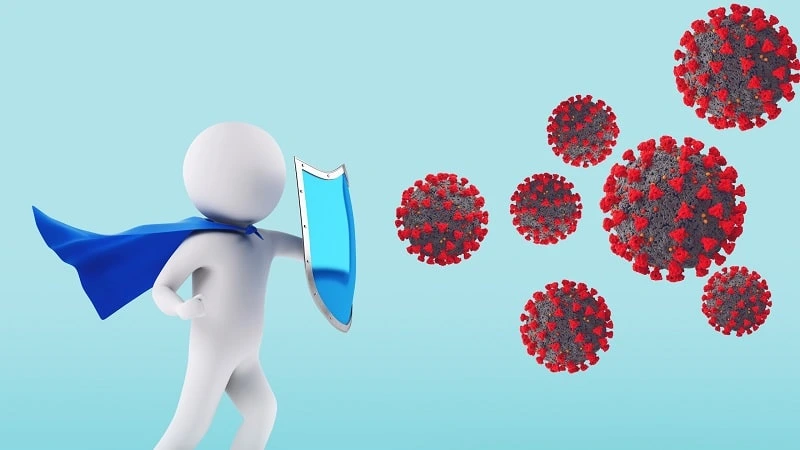Mosquitoes, those tiny buzzing insects we often swat away, can carry something far more concerning than an annoyance—they can carry diseases. These diseases, known as mosquito-borne diseases, are spread to humans through mosquito bites.
They’re like secret messengers, transmitting illnesses like the West Nile Virus (WNV) from one person to another. The West Nile Virus is a type of infection that mosquitoes can pass to humans when they bite.
This topic isn’t just for scientists in white coats; it’s for all of us. By learning about mosquito-borne diseases, like the West Nile Virus, we can take simple steps to protect ourselves and our communities. So let’s uncover the buzz about these diseases and find out how we can stay safe.
Mosquito-Borne Diseases
Mosquito-borne diseases are infections that certain mosquitoes carry and pass on to humans when they bite. These diseases are more than just itchy annoyances; they can make us sick. Let’s dive into the basics:
Common Types of Mosquito-Borne Diseases
There are various types of these diseases. Some familiar names include Malaria, Zika Virus, Dengue Fever, and, of course, West Nile Virus (WNV).
How Mosquitoes Spread Diseases
Mosquitoes act as tiny needles, injecting harmful germs into our bodies when they bite us. They pick up these germs from infected people or animals and transfer them to new victims with their bites.
Global Impact on Public Health
Around the world, mosquito-borne diseases impact millions of people each year. They can cause illnesses ranging from mild discomfort to severe health problems, especially in places where mosquitoes are abundant.
Read More:Can You Get Lyme Disease from Mosquito?
The Disease of West Nile Virus
The West Nile Virus (WNV) is one of the many illnesses mosquitoes can transmit. Let’s take a closer look at this virus:
What is West Nile Virus (WNV)?
WNV is a type of virus that can cause illness in humans. It belongs to a group of viruses known as flaviviruses. Mosquitoes become carriers of WNV when they bite infected birds.
Transmission Through Mosquito Bites
When a mosquito carrying the virus bites a human, it can transmit WNV into the person’s bloodstream. The virus then travels through the body, potentially causing various symptoms.

Symptoms of WNV Infection
Symptoms of WNV infection can vary. Some people might not show any signs, while others could experience mild symptoms like fever, headache, and body aches.
In more severe cases, individuals might develop encephalitis or meningitis, which can affect the brain and spinal cord.
Prevalence and Geographical Distribution
WNV isn’t present everywhere. It’s more common in regions with warm climates, where mosquitoes thrive.
Cases of WNV infection tend to increase during the warmer months when mosquito populations are at their peak.
Prevention and Protection
Protection from WNV starts with preventing mosquito bites. Wearing long sleeves, using insect repellent, and staying indoors during peak mosquito activity hours can help.
Communities also work to reduce mosquito breeding sites and control mosquito populations to limit the virus’s spread.
Spread and Incidence
Understanding how the West Nile Virus (WNV) spreads and its occurrence is crucial for managing its impact. Let’s delve into the details:
Geographical Distribution of WNV
WNV isn’t found everywhere. It’s most prevalent in regions with warm climates, where mosquitoes can thrive.
Places with stagnant water, like ponds or marshes, provide ideal breeding spots for the mosquitoes that carry the virus.
Factors Influencing Spread
The spread of WNV depends on several factors. Mosquito populations, the presence of infected birds, and suitable weather conditions all play a role.
Urbanization can also affect the distribution of the virus, as it can create environments that support larger mosquito populations.
Incidence Rates and Seasonal Patterns
WNV infections tend to rise during the warmer months when mosquitoes are most active. In temperate regions, cases often peak in late summer and early fall. However, in warmer climates, infections can occur year-round.
Surveillance and Tracking
Health authorities track WNV cases to monitor its spread and better understand its patterns. This surveillance helps identify areas at risk and allows for timely interventions to prevent outbreaks.

Prevention and Control
Taking action to prevent and control the spread of the West Nile Virus (WNV) is essential for safeguarding public health. Let’s explore the strategies:
Personal Protective Measures
Individuals can protect themselves from WNV by wearing clothing that covers their skin and using mosquito repellent on exposed areas.
This is especially important during times when mosquitoes are most active, like dawn and dusk.
Read More: Fever Chills Body Aches Headache Fatigue No Cough: What Does It Indicate?
Eliminating Breeding Sites
Mosquitoes breed in standing water. Communities can reduce mosquito populations by removing or treating sources of stagnant water, such as flower pots, bird baths, and clogged gutters.
Mosquito Control Strategies
Local authorities employ various methods to control mosquito populations. This can include using insecticides in areas with high mosquito activity and implementing environmentally friendly approaches like introducing mosquito-eating fish to water bodies.
Vaccination
While there is no specific vaccine for humans against WNV, vaccines have been developed for animals, particularly horses.
Vaccinating horses can reduce the risk of their becoming infected and can indirectly lower the risk of human exposure.
Community Engagement
Raising awareness about WNV and its prevention is crucial. Communities can collaborate to educate residents about the importance of mosquito control, protection measures, and early symptom recognition.
Diagnosis and Treatment
Detecting and managing West Nile Virus (WNV) infections involves specific methods and approaches. Let’s explore the details:
Methods for Diagnosing WNV Infection
Doctors can diagnose WNV using blood tests. They might look for specific antibodies or genetic material of the virus in the blood.
In severe cases, cerebrospinal fluid may be tested to identify the virus’s presence in the central nervous system.
Supportive Care
Currently, there’s no specific antiviral medication for treating WNV. Instead, medical care focuses on alleviating symptoms.
Pain relievers, fever reducers, and hydration can help manage discomfort and fever associated with the infection.
Hospitalization in Severe Cases
Patients with severe WNV symptoms, such as neurological complications, might need to be hospitalized for close monitoring and supportive care.
In some instances, they might receive treatments such as intravenous fluids and pain management.
Early Detection Matters
Early diagnosis is essential for better outcomes. Recognizing symptoms and seeking medical attention promptly can help prevent complications and ensure appropriate care.
Conclusion
In the intricate world of mosquito-borne diseases, the West Nile Virus (WNV) stands out as a significant health concern.
By delving into the nuances of its transmission, symptoms, prevention, and management, we gain the power to protect ourselves and our communities.
Understanding that mosquitoes serve as vectors of WNV empowers us to take proactive measures to prevent bites and reduce our risk of infection.
Equally important is the early recognition of symptoms and seeking medical attention, especially in severe cases.
In a warming world, where mosquito habitats may expand, our knowledge becomes a critical tool.
Through coordinated efforts, from personal protection to community engagement, we can stifle the spread of WNV and other mosquito-borne diseases.
Armed with awareness and action, we can navigate the buzz of these diseases with resilience and vitality.
FAQs (Frequently Asked Questions)
1. What is the West Nile Virus (WNV)?
WNV is a virus transmitted by mosquitoes, causing various symptoms ranging from mild fever to severe neurological complications.
2. How is WNV transmitted to humans?
Mosquitoes become carriers of WNV when they bite infected birds and then transmit the virus to humans through their bites.
3. What are the common symptoms of WNV infection?
Common symptoms include fever, headache, body aches, and, in severe cases, neurological symptoms like encephalitis.
4. Can WNV be treated with medication?
Currently, there’s no specific antiviral treatment for WNV. Medical care focuses on managing symptoms and providing supportive care.
5. How can I protect myself from WNV?
Personal protection measures include wearing long sleeves, using mosquito repellent, and avoiding outdoor activities during peak mosquito activity.
6. Are there vaccines available for WNV?
While there’s no human vaccine, vaccines for animals, particularly horses, exist to reduce the risk of infection.
7. What is the geographical distribution of WNV?
WNV is more prevalent in regions with warm climates, where mosquitoes are abundant and active.
8. How is WNV diagnosed?
Diagnosis involves blood tests to detect specific antibodies or genetic material of the virus, along with cerebrospinal fluid testing in severe cases.
9. Why is early detection important for WNV?
Early detection allows for prompt medical care, which can help prevent complications and improve outcomes.
References
- Centers for Disease Control and Prevention. West Nile Virus. cdc.gov.
- World Health Organization. West Nile Virus. who.int.
- Rossi SL, et al. West Nile virus: recent trends in diagnostics and vaccine development. Expert Review of Anti-Infective Therapy. 2017;15(2): 111-120.
- Hayes EB, Gubler DJ. West Nile virus: epidemiology and clinical features of an emerging epidemic in the United States. Annual Review of Medicine. 2006;57:181-194.
- Petersen LR, Brault AC, Nasci RS. West Nile virus: review of the literature. Journal of the American Medical Association. 2013;310(3):308-315.
- Murray KO, et al. Clinical investigation of hospitalized human cases of West Nile virus infection in Houston, Texas, 2002-2004. Vector-Borne and Zoonotic Diseases. 2010;10(2): 141-147.







